Inquiry Domain Controls

Overview
Research Methods (PH'2)
This framework is posted in detail in the Inquiry & Knowing Satellite.
Establishing Conjectures (PH'2C)
The can be viewed as that are naturally used in any scholarly or conducted within a community of colleagues.
Most scholarly inquirers are only fully comfortable in applying one or two . However, all inquirers regard certain assumptions and values intrinsic to each method as relevant and potentially necessary to ensure certainty in knowing(i.e. the primal need). These characteristic sets of interlinked assumptions and values constitute the modes.
So modes enable conjectures to be developed and strengthened in a way that is likely to provide more certainty, with each mode making its own distinctive contribution to knowing: details in table below.
Each mode is built around:
a) promoting certainty by:
- the essence for knowledge in that mode;
- the benefit provided by the effort to know;
- the means whereby knowledge is ensured.
b) handling colleagues by:
- exercising autonomy;
- enabling participation;
- obtaining self-affirmation.
c) channelling personal functioning:
- to counter doubts.
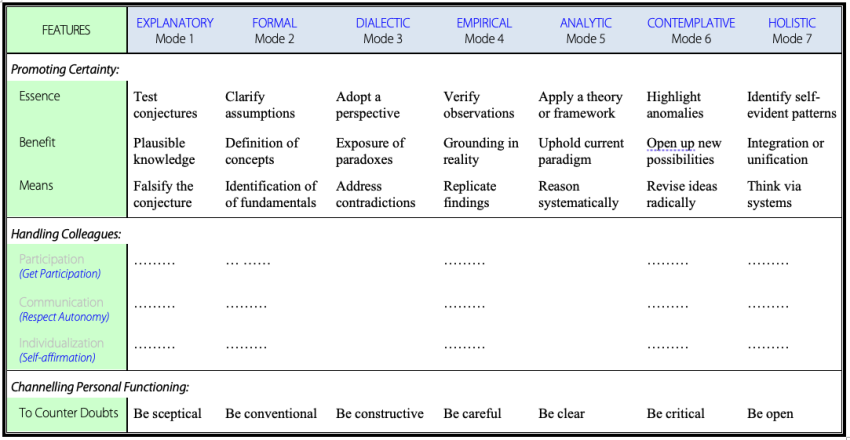
Knowledge emerges from , which are regarded as valid by colleagues of independent mind. So all knowledge necessarily commences in a which posits, under a pressure for certainty, a relation that seems to exist in reality, and purports to explain it.
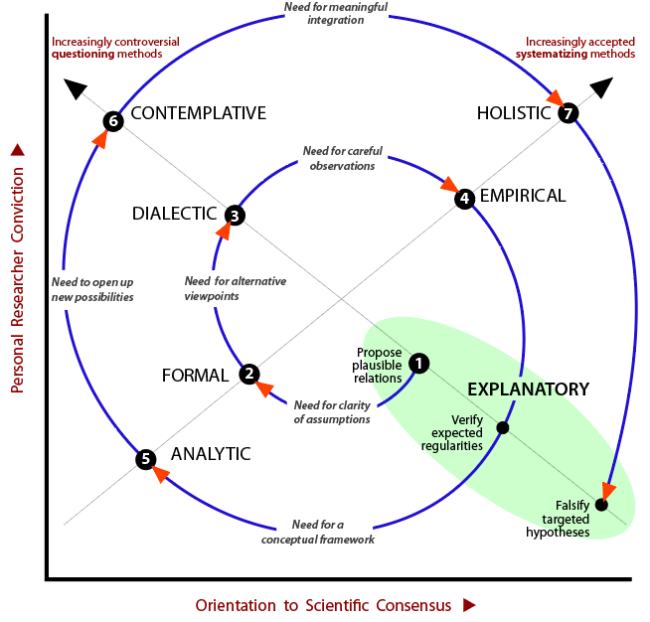
To sustain and strengthen any such , modes must be activated in a series of Stages. Values of each mode cumulate progressively, so Stages reflect an increasingly sophisticated . An inquirer can stop the strengthening process at any Stage if there is a satisfactory degree of certainty that the can be accepted as knowledge amongst relevant scholars.
In the TET diagram, the unavoidable and natural order for development shows up as a typical Spiral trajectory.
The initial comes into existence spontaneously. Cycle-1 develops in accord with the need to control scientific study: initially by clarification of assumptions, then by consideration of alternative views in a process, and finally by careful observations.
Cycle-2 addresses the aspiration to enhance subjective certainty and ensure collegial acceptability: initially by placing the conjecture in a conceptual framework (), then by allowing for new possibilities in a process, and finally by integration with existing knowledge ().
Drivers for progression from one mode/Stage to the next include:
- researcher initiative and genius
- need for greater grasp/acceptance by peers
- aspirations and pressures for certainty
- limitations or excesses of the current Stage.
![]() Click to see the Two Diamonds diagram.
Click to see the Two Diamonds diagram.
Determinants of Knowledge (PH'2CK)
This Tree is not yet posted
See initial formulations below.
Better viewing: Use browser zoom if needed.
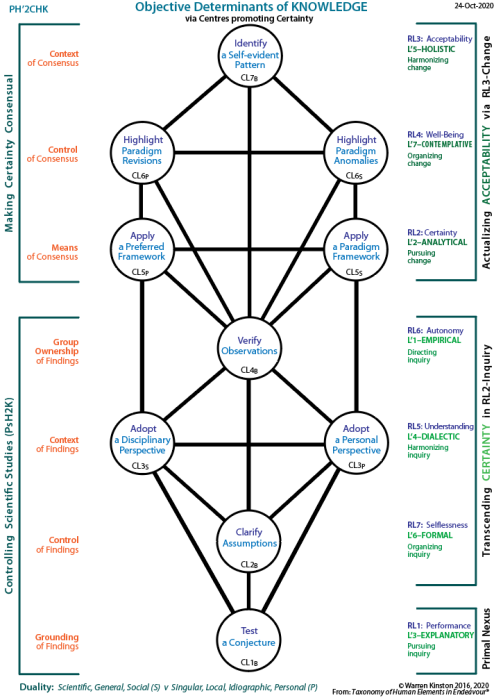
|
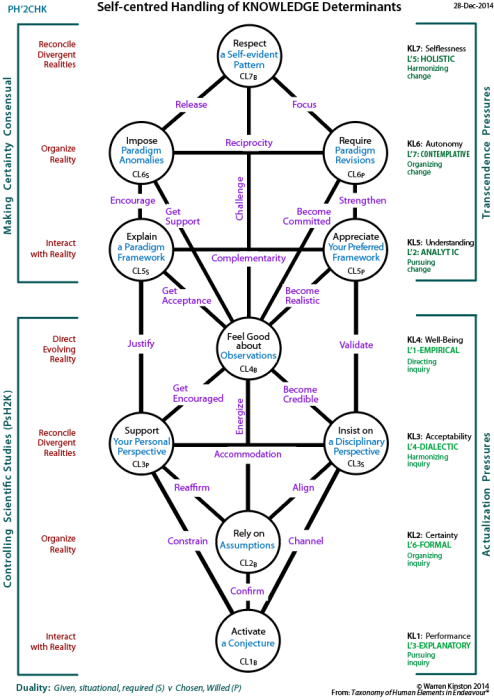
|
A focus on the relevant psychosocial pressures is provided here in the Root Hierarchy Projection section.
Increasing Certainty (PH'2CsH)
These are old preliminary speculations.
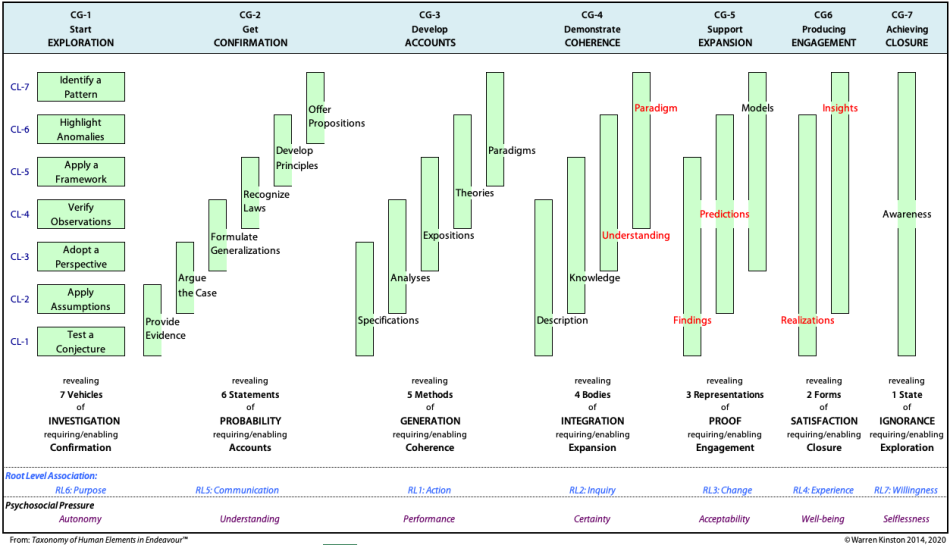
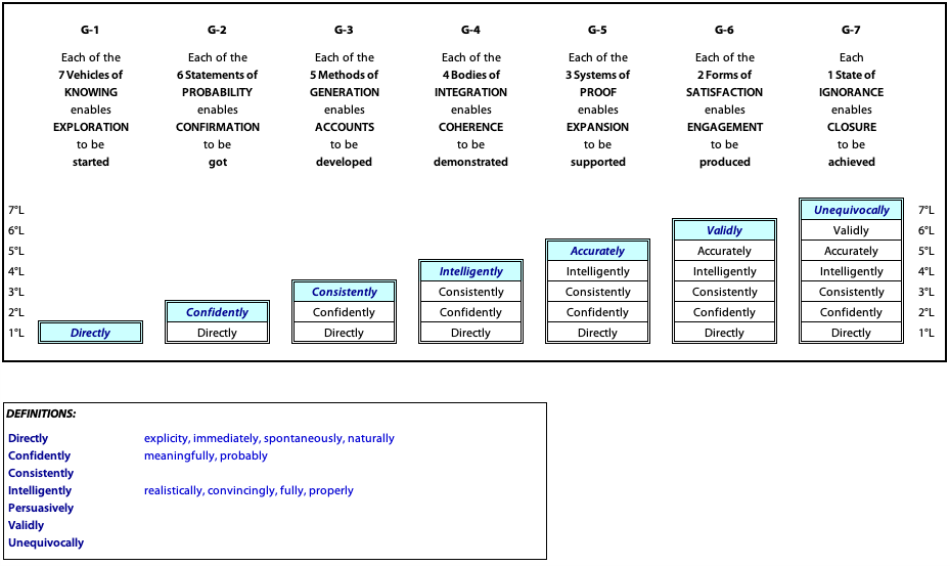
Evaluation of Conjectures (PH'2CsHK)
Better viewing: Use browser zoom if needed.
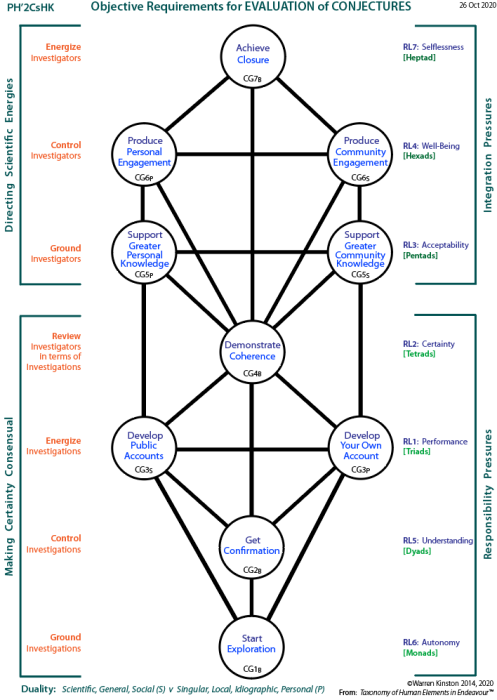
|
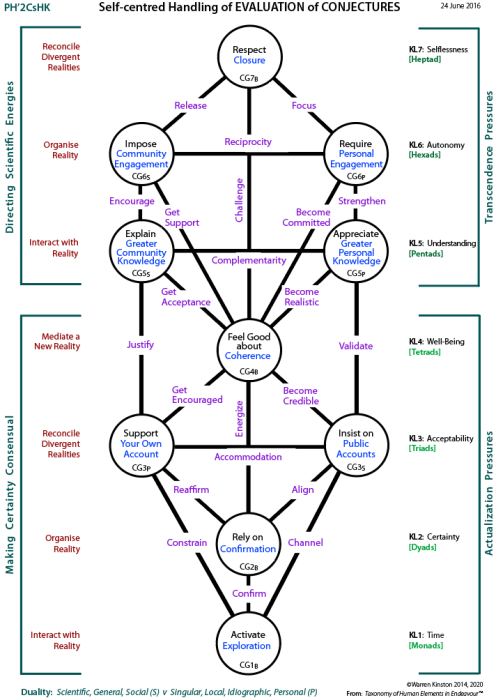
|
Additional details related to certain theoretical developments are provided within the Framework Naming section of the Architecture Room.
